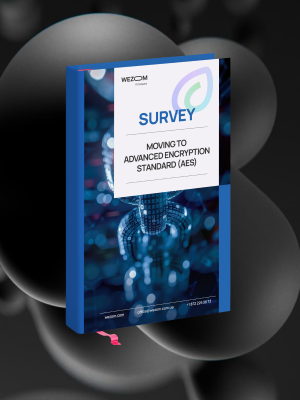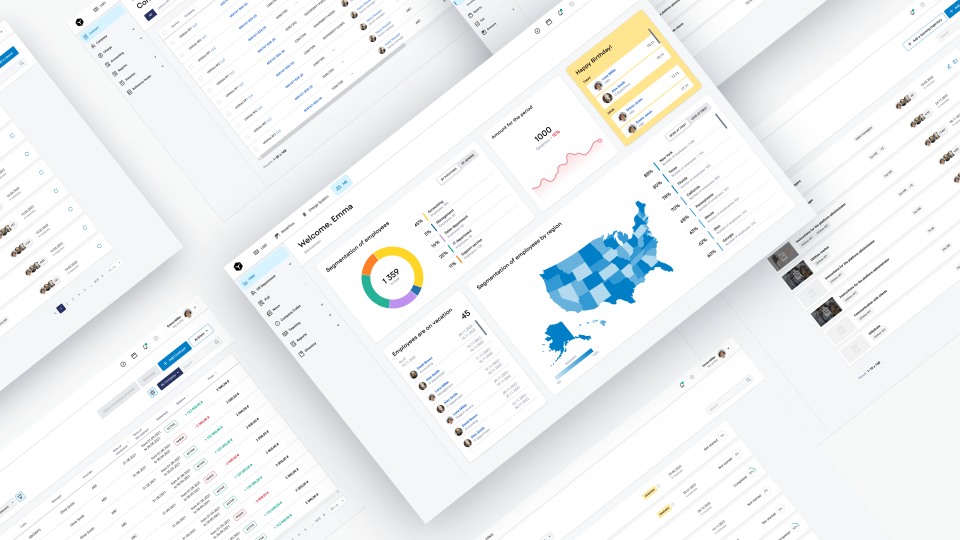The question of cybersecurity plays a crucial role for any modern business. And quite a lot of people still remember the infamous Equifax story...
In September 2017, the company announced a large-scale cyberattack. As a result, hackers gained access to sensitive information of approximately 147 million customers (including their names, social security numbers, dates of birth, addresses, and credit card numbers). Equifax faced numerous lawsuits from regulators and shareholders and was forced to compensate affected customers. The overall financial losses associated with this breach reached hundreds of millions of dollars.
At that time, Equifax used an encryption algorithm called Triple DES (3DES) to protect confidential data. However, the current widely accepted standard is AES Encryption. In this article, we want to provide a detailed explanation of what it is, how does AES work, and how to use cybersecurity algorithms within your project.
What Is AES Encryption
Advanced Encryption Standard is one of the most reliable and secure encryption methods widely used in modern digital technologies:
- Google employs AES Cybersecurity for encryption in Gmail, Google Drive, as well as for data protection in transit between servers and clients.
- Apple utilizes AES to secure user data on its devices, including iPhone, iPad, and Mac.
- Microsoft has implemented AES in Windows, Office 365, Azure to ensure the security of user and corporate data.
These are just a few notable examples. Advanced Encryption Standard is used by banks, investment firms, payment systems, and telecommunication companies.
In our opinion, any local or international organization should adopt this cryptographic standard, including e-commerce entrepreneurs.
Interesting Fact. The process of AES developing began in 1997 when the National Institute of Standards and Technology (NIST) announced a competition to create a new encryption to replace the outdated DES (Data Encryption Standard). Over 15 different variants were submitted for the competition. Eventually, the Rijndael algorithm, developed by Belgian cryptographers Vincent Rijmen and Joan Daemen, was selected. This algorithm is now known to us as AES.
So, the Advanced Encryption Standard is an official global encryption standard approved in the United States. However, there is no specific law on the adoption of the advanced encryption standard. AES was approved on the basis of the National Institute of Standards and Technology (NIST), making it widely applicable not only in the United States but also in global practice.
U.S. government agencies use AES to protect national security data, financial reports, personal data of citizens, and other sensitive information.
Characteristics and Advantages
As mentioned above, AES is one of the most modern and reliable encryption algorithms. Among its advantages is its high efficiency, meaning good operating speed even with large data volumes. Additionally, this standard is supported in various operating systems, software, and devices, making it an ideal choice for data security at different levels.

All this is achieved through the following characteristics:
- Symmetric Encryption. Unlike asymmetric encryption algorithms like RSA, which use a pair of keys (public and private), AES uses the same key for both encryption and decryption of data. This makes it more efficient in real-world applications. Thus, for transmitting encrypted data, both parties must have access to the same secret key.
- Block Cipher. The algorithm operates on data blocks of a fixed size (usually 128 bits), allowing it to encrypt data in portions and work with arrays of information.
- Block Cipher Sizes. AES supports three different key sizes: 128, 192, and 256 bits. A larger key size usually means a higher level of security, as increasing it makes brute-force attacks more difficult.
Do you want to know the benefits that your customers will receive from the implementation of NPP encryption? Download our survey in the forms below:

How does AES Encryption work
If we speak in simple terms and simplify the process of encrypting data, it will look like this:
- Key Initialization: The key must be random and known only to the sender and receiver of the data.
- Padding: If the length of the original data is not a multiple of the block size (usually 128 bits), it is padded before encryption to create a complete block.
- Encryption: Next, the data is divided into blocks of a fixed size, and each block is encrypted separately. During the encryption process, the blocks go through several rounds (usually 10 for 128-bit keys). Each round involves substitution, permutation, and a combination of bits, making reverse transformation extremely difficult without knowing the key.
- Decryption: The decryption process is similar to the encryption process but performed in reverse order. Encrypted data blocks are decrypted using the same key that was originally used.
Let's consider an example
Let's say our task is to encrypt the password "password123." For this, we need a specific key. Let's imagine it's a random string, for example, "MySecretKey." We apply AES to encrypt the password "password123" using this key.

The result of encrypting the password will be a byte string or hexadecimal representation of data that cannot be read without knowing the key. Here's what the encrypted password might look like in hexadecimal representation: 0x3a7b8c2f9d4e1a6b5c8e7f3d1b9a4c8e
To get the original password back, you need to apply the decryption process using the same key.
It's clear that this is a very simplified example. In reality, the process can be more complex, considering additional security measures such as salt and initialization vector to enhance protection against various attacks.
An example with a real client
When a client from the Oil & Gas Industry approached us, we also worked on cybersecurity within the project according to the AES Data Encryption standard. Implementing it into the ecosystem allowed the client not to worry about data breaches in the future and make protection against new types of attacks, including viruses, malware, phishing, DDoS attacks, and others.
Overall, the case was quite interesting, you can read more about it here:
Conclusion
Understanding and implementing AES encryption is imperative for any organization serious about protecting its data integrity and security.
Whether you are a small enterprise or a large corporation, the adoption of AES can significantly mitigate the risk of data breaches and cyber attacks. If you're interested in delving deeper into the topic of cyber security services, we recommend signing up for a free consultation using the form below.

